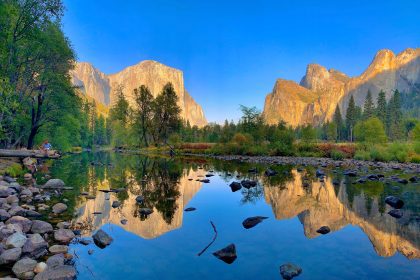In our increasingly eco-conscious world, discovering methods that simultaneously shrink our environmental footprint and trim household expenses is a victory for both our wallets and the planet. One such uncomplicated yet remarkably effective approach is the collection of rainwater. This not only aids in your contribution to water conservation but also serves as a practical means to reduce your water bill. Within this guide, we delve into the myriad benefits of rainwater harvesting, offering valuable insights and actionable tips on initiating this eco-friendly practice. By the end of this read, you’ll be equipped with the knowledge to harness the power of rainwater, a sustainable solution that aligns with both environmental consciousness and economic savings. Let’s explore the wealth of advantages that come with capturing and utilizing rainwater, transforming a simple practice into a powerful agent of positive change.
Why collect rainwater?
The benefits of collecting rainwater extend beyond financial savings. Rainwater is a free and naturally soft water source, making it ideal for various household uses. From watering your garden to washing your car, rainwater is a sustainable alternative that can make a significant impact on your water bill.
The basics of rainwater harvesting:
1. Gathering rainwater from roofs:
Begin by installing gutters and downspouts on your roof. These systems channel rainwater into a collection point, typically a barrel or a larger storage tank.
2. Choosing the right container:
Opt for a container that suits your needs and space. Barrels made of food-grade materials are ideal for storing rainwater. Ensure the container has a tight-fitting lid to prevent debris and mosquitoes from entering.
3. Installing a filter:
Attach a simple filter to the downspout to screen out leaves and debris. This ensures that the collected rainwater is clean and ready for use.
4. Diverting overflow:
To prevent waterlogging, consider installing an overflow diverter. This redirects excess water away from your collection system and protects your home’s foundation.
Practical uses for collected rainwater:
1. Watering garden:
Rainwater is rich in nutrients and free from harsh chemicals found in tap water. Use it to nurture your garden, promoting healthier plants and soil.
2. Washing car:
Save on your water bill by using rainwater for washing your car. Its softness prevents water spots, and you’ll be amazed at the results.
3. Household cleaning:
From mopping floors to cleaning windows, rainwater is a versatile and cost-effective solution for various household chores.
4. Flushing toilets:
Consider connecting a rain barrel to your toilet’s flushing system. This can significantly reduce your indoor water consumption.
Environmental impact:
Aside from personal benefits, rainwater harvesting contributes to environmental conservation. By reducing your reliance on municipal water sources, you help preserve local water supplies and lessen the burden on water treatment facilities.
Embracing rainwater harvesting as a fundamental aspect of your daily routine represents a practical and eco-friendly strategy, yielding both financial savings and environmental dividends. The simplicity of installation coupled with the myriad benefits makes rainwater collection a small yet impactful step toward a sustainable future. As you embark on this journey, you’re not only taking control of your water expenses but actively participating in the creation of a greener and more water-conscious community.
The beauty lies in the dual reward system – your wallet grows thicker while your ecological footprint shrinks. By adopting rainwater harvesting, you become an agent of positive change, contributing to the broader effort of water conservation. It’s not just a personal investment; it’s a collective commitment to a more sustainable world.
So, seize the opportunity to start harvesting rainwater today. Witness the flourishing vitality of your garden and the growth of your savings, knowing that each drop collected is a contribution to a healthier planet and a more responsible, water-savvy community.
This story was created using AI technology.










